Performance Analysis: Hitman beta on PC
Can PC power past the PS4 version's frame-rate issues?
In gameplay terms, a few hours of play with the Hitman beta suggests a return to form for the series, bringing back traditional stealth action paired with bigger environments, dynamic lighting and a gigantic leap in NPC counts across the game's various locations. It's a promising taster of Agent 47's latest adventure, but last week's PS4 beta saw an experience marred by some really choppy performance, paired with an unlocked frame-rate further adding to the overall inconsistency in the experience.
So what was the issue causing frame-rate drops down to the low 20s... CPU? GPU? We wouldn't really know until we got our hands on the PC beta, released last weekend, mirroring the exact same content. We were also curious to see the extent to which Io's evolved Glacier engine would scale, and whether 1080p60 gameplay was possible. In theory it should be easy for an enthusiast-level PC version to power past the performance issues of the PS4 game, but unfortunately this isn't quite the case with Hitman. Scenes heavy in NPCs can still bring performance down to its knees, even on highly capable PC hardware - and frame-rates remain highly variable.
From a general visual perspective, the PC version offers up the kind of upgrades we see in many cross-platform releases. Basic image quality at 1080p resolution is improved via the ability to use SMAA, presenting us with a crisper image that resolves more detail across the artwork. This is joined by upgrades in shadow quality, level of detail streaming, texture filtering and ambient occlusion.
Taking a closer look at the two, the PS4 version falls into line with the PC game running with medium quality levels, with texture quality set to the top high setting. Curiously, despite the PS4 featuring maximum quality artwork, many surfaces appear blurrier, with details smoothed over to a degree. Here we're seeing the effects of Io Interactive's anti-aliasing solution: switching to FXAA on PC results in similar blurring, and it's best avoided since SMAA provides better coverage, while still being light on GPU power.
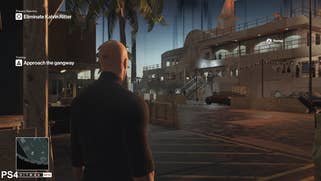



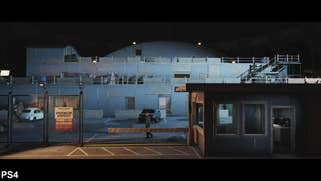

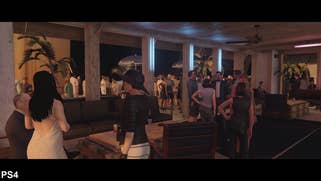

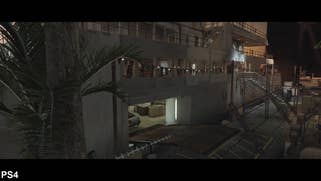
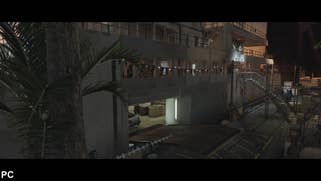
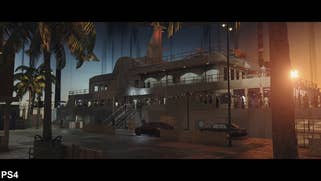
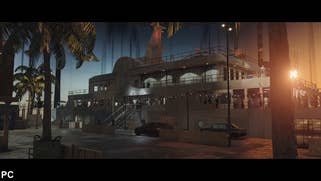
The opening cinematics of the first mission and subsequent surveying of the docks during gameplay brings to light the use of less aggressive LOD streaming on PC, though the effect overall is somewhat subtle. Geometry counts are a touch higher and textures more detailed, but often these changes aren't immediately obvious during gameplay, unless you play both versions back-to-back.
On the other hand, shadow quality is one area where the PC version delivers a clearly noticeable improvement. Thin shadows cast by pipework and smaller objects appear soft and slightly indistinct on the PS4, while on the PC these elements are sharper and more defined. Shadows cast by environmental objects also appear at longer distances on PC, adding subtle details that are absent on the PS4. This is joined by a more complex ambient occlusion implementation that provides greater shade across corners and in between the spaces where objects meet.
Overall, the graphical upgrade on the PC version isn't revelatory, but certainly provides an additional layer of refinement to the visuals that gamers will appreciate. >But the price you pay with this additional level of refinement comes in the form of somewhat wayward levels of performance - just like the PlayStation 4 version in terms of its overall profile, with crowded scenes in particular seeing some severe drops to performance. In many modern titles, a GTX 970 or Radeon R9 390 paired with Core i7 processor provides a locked 60fps with just a few careful tweaks to graphics settings. But our testing with the Hitman beta found that even lowering settings cannot eradicate all of the performance drops when the screen is filled with NPCs. And we're pretty convinced that this time it's the GPU that is the major constricting factor, as the beta's CPU utilisation looks not only very low, but well-balanced across all eight threads.
We initially chose the GTX 970 for testing as Nvidia's card is the single most popular GPU for gamers, according to the Steam hardware survey. By extension, the Radeon R9 390 is its closest equivalent from the red team. What's interesting here is that AMD cards have a sizable performance advantage - particularly in less demanding locations - and indeed gameplay does look and feel smoother due to the increased frame-rate. Frame delivery is also more consistent across a run of play, though both have occasional hitches. But what's curious is that the NPC-heavy scenes see both cards equalise in terms of performance, which had a very curious impact on our following test.
There, we attempted to hit a consistent 1080p60 on both cards, dialling back the settings to medium but retaining high textures, just like PS4. We also retained SMAA as it helps the presentation a lot. In this scenario, both cards operated in a highly like-for-like manner - both hit the 60fps limit we imposed, but both could see drops to 55fps in the trouble spots. The Zotac GTX 970 we use right now essentially runs at something very close to reference clocks, and it actually has a large amount of overclocking headroom that the R9 390 does not, so with the aid of our customary +200MHz core overclock and +400MHz memory OC, we could push on those frame-rates again - we achieved 1080p60 gameplay, with just a small dip in the cut-scenes.
But the fact remains that we required a hell of a lot of processing power to brute-force our way to 60fps - on mostly medium settings, no less - and it has to be said that the visual return doesn't feel particularly extravagant bearing in mind the extremes we went to. We also tried out the budget-level GTX 750 Ti plus the R7 360, AMD's equivalent. The AMD advantage here is much more impactful as we see a significant increase in the lowest recorded frame-rates here. Even overclocked, the GTX 750 Ti can't match it. The medium quality preset is viable, with one caveat. 2GB graphics cards lock you to the lowest quality textures - significantly lower than PS4's presentation. And right now, there's nothing you can do to force higher fidelity asset.
Overall, the beta has left us with the sense that there's a great game here, but performance does seem sub-optimal on both PC and PS4. Hopefully Io Interactive will take on board the feedback and concentrate its optimisation efforts on all versions of the game, but our concern is that the full title is due out very soon now and what we have here may well be a very close approximation of the release version's performance level. If so, that's a little disappointing.










